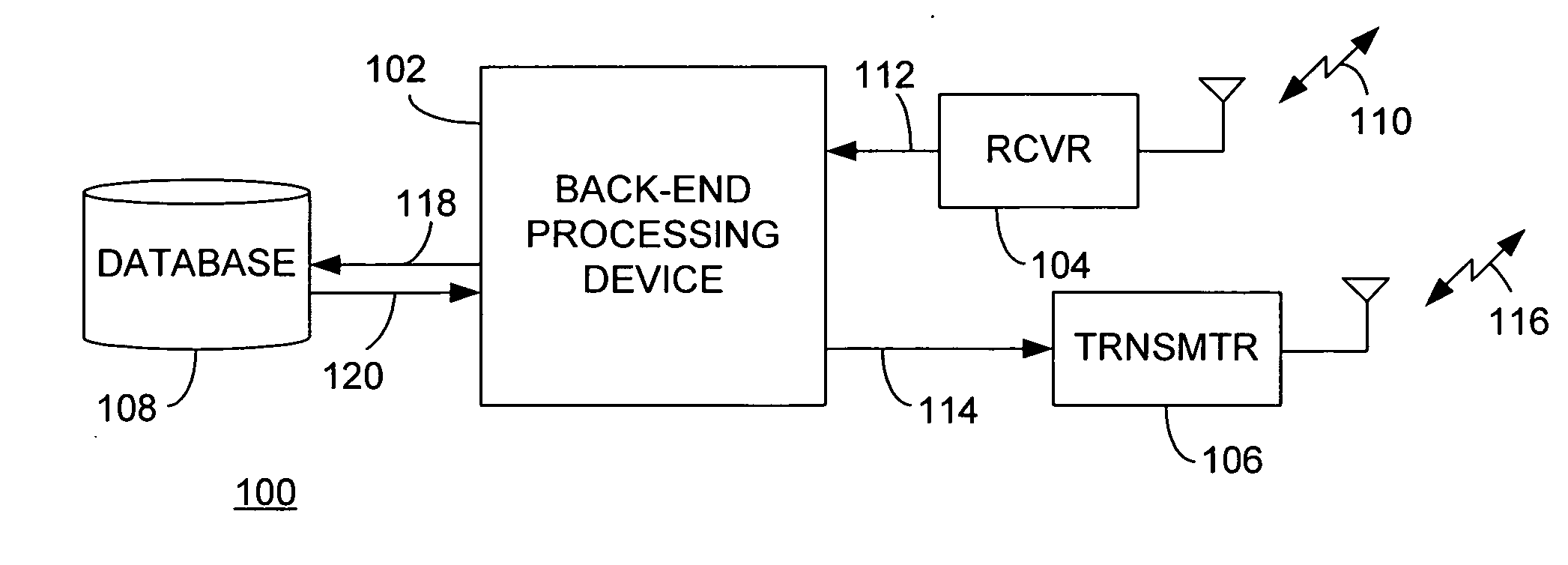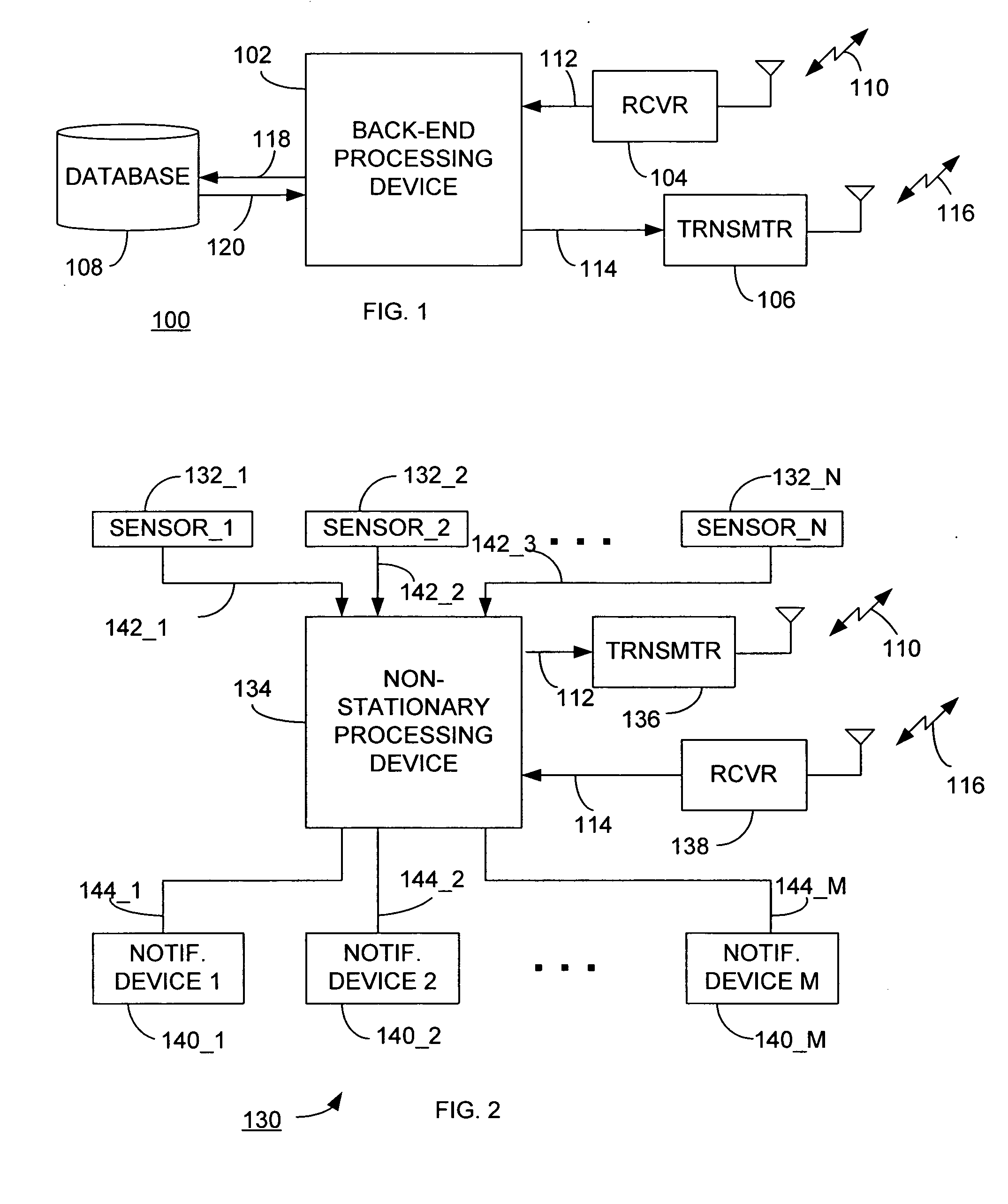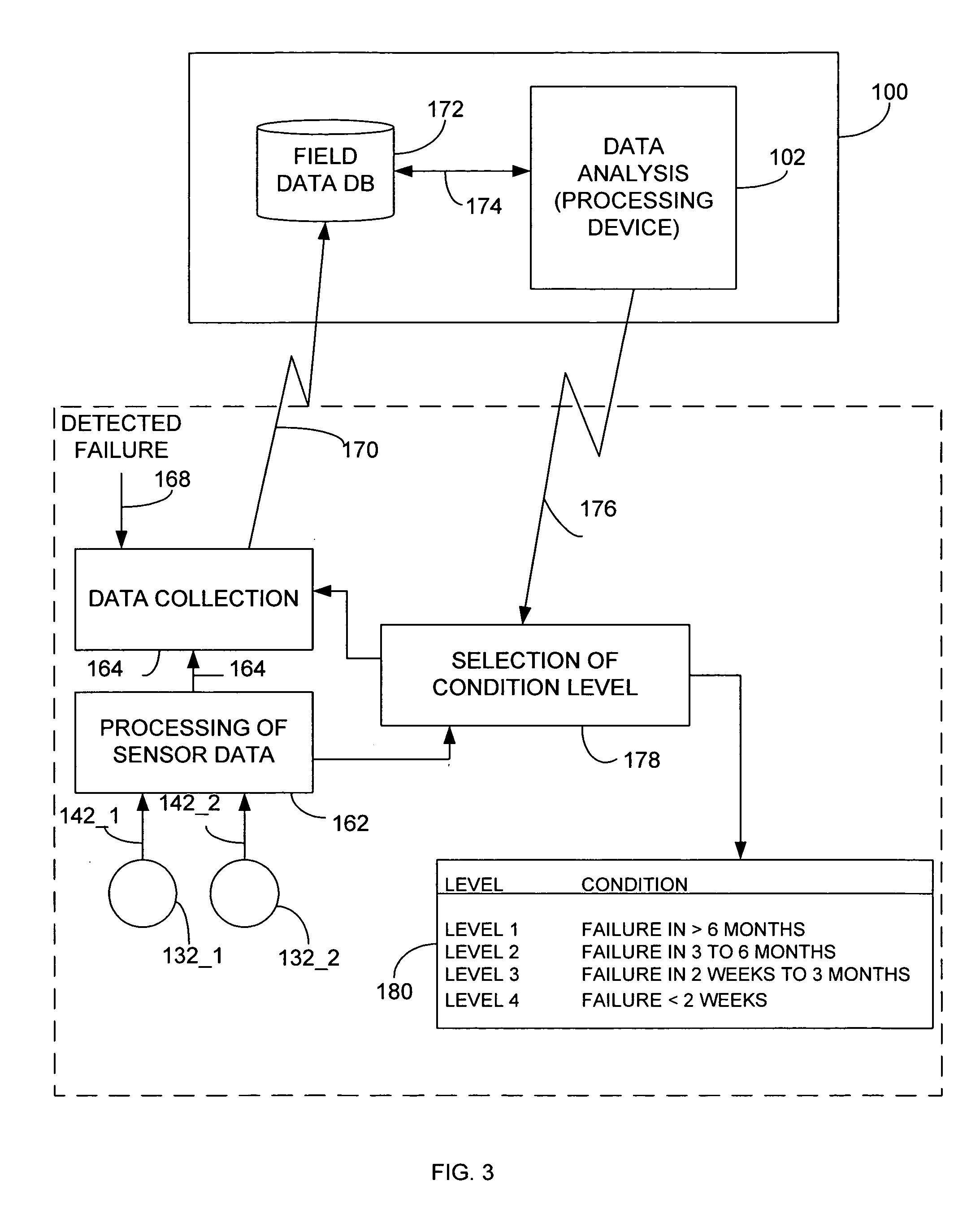Predictive fault determination for a non-stationary device
a non-stationary device and fault determination technology, applied in the direction of electric controllers, instruments, ignition automatic control, etc., can solve the problems of inability to achieve sophisticated levels of computation, inability to include any significant amount of internal computing power, and inability to detect faults in real tim
- Summary
- Abstract
- Description
- Claims
- Application Information
AI Technical Summary
Benefits of technology
Problems solved by technology
Method used
Image
Examples
Embodiment Construction
[0018] Generally, a predictive fault determining system includes a non-stationary operating device and a fault determining device. The term non-stationary operating device may refer to an operating device that is in motion and this terminology may also refer to an operating device that is temporarily stationary, but has the capacity, as part of its normal operating and in order to fulfill its intended purpose, to move (i.e., enter into a non-stationary state). The fault determining device is stationary and communicates with the non-stationary operating device using a wireless transmission. The non-stationary operating device includes sensors to determine status data of one or more components of the operating device. Normally, the operating device uses sensors data to select a condition level from one of a plurality of levels, expressing varying degrees of device degradation, an example of which is table 180 of FIG. 3. The non-stationary operating device further includes a processing...
PUM
 Login to View More
Login to View More Abstract
Description
Claims
Application Information
 Login to View More
Login to View More - R&D
- Intellectual Property
- Life Sciences
- Materials
- Tech Scout
- Unparalleled Data Quality
- Higher Quality Content
- 60% Fewer Hallucinations
Browse by: Latest US Patents, China's latest patents, Technical Efficacy Thesaurus, Application Domain, Technology Topic, Popular Technical Reports.
© 2025 PatSnap. All rights reserved.Legal|Privacy policy|Modern Slavery Act Transparency Statement|Sitemap|About US| Contact US: help@patsnap.com



